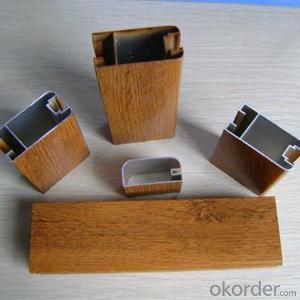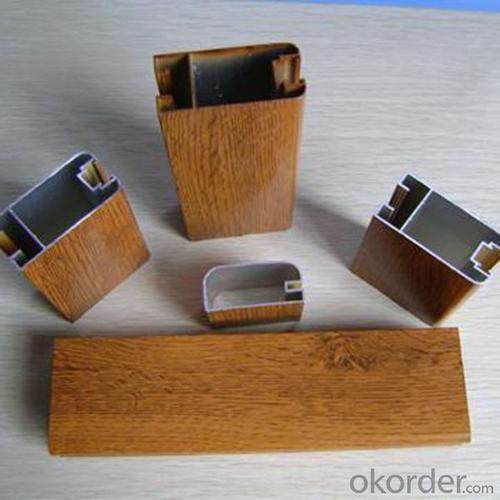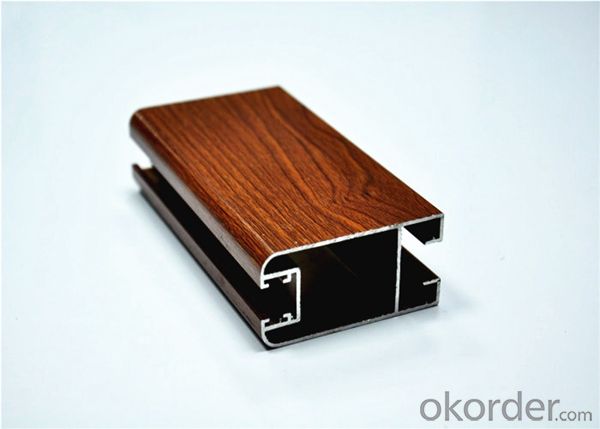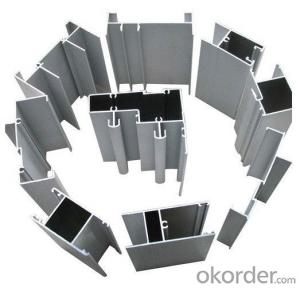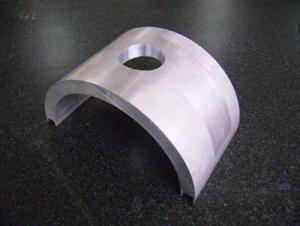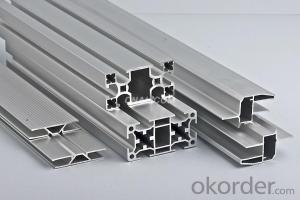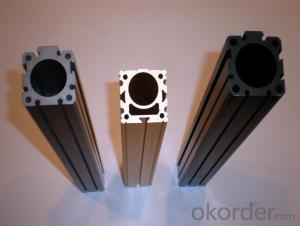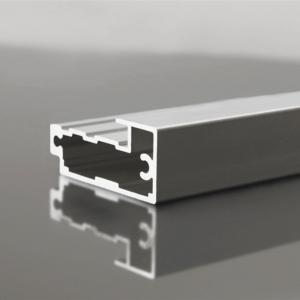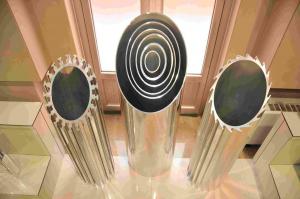Aluminum Siding Profiles - Extruded Aluminum Alloy Profiles Prices Made in China
- Loading Port:
- Shanghai
- Payment Terms:
- TT OR LC
- Min Order Qty:
- 5 m.t.
- Supply Capability:
- 10000 m.t./month
OKorder Service Pledge
OKorder Financial Service
You Might Also Like
Specification
1. Specification of Extruded Aluminum Alloy Profiles Prices Made in China
Alloy | AA1050,AA1060, AA1070, AA1100 |
Temper: | H12, H14, H16, H18, H22, H24, H26, H32,HO, F |
Thickness: | 0.10-500mm |
Width: | 10mm- 2200mm |
Standard: | GB/T3880-2006, ASTM, ISO, EU standard |
Special Specification is available on customer’s requirement | |
2. Application of Extruded Aluminum Alloy Profiles Prices Made in China
wall cladding, ceilings, bathrooms, kitchens and balconies, shutters, doors,windows…
3. Feature of Extruded Aluminum Alloy Profiles Prices Made in China
Surface Quality :
Be free from Oil Stain, Dent, Inclusion, Scratches, Stain, Oxide Decoration, Breaks, Corrosion, Roll Marks, Dirt Streaks and other defect which will interfere with use,
Mochenical Property:
Chemical Composite and Mechanical Property
4. Certificate:
SGS and ROHS(if client request, paid by client), MTC(plant provided), Certificate of Origin(FORM A, FORM E, CO), Bureau Veritas and SGS (if client request, paid by client), CIQS certificate
5. Image of Extruded Aluminum Alloy Profiles Prices Made in China
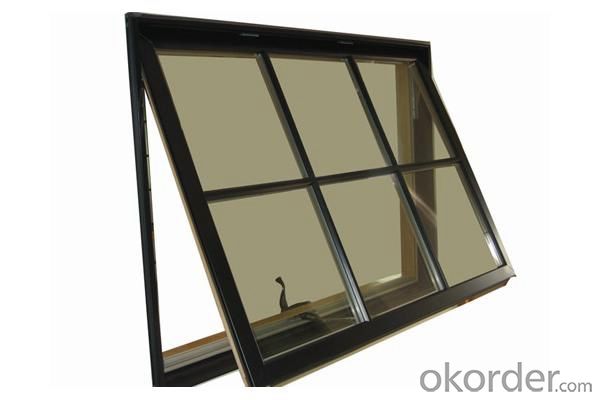
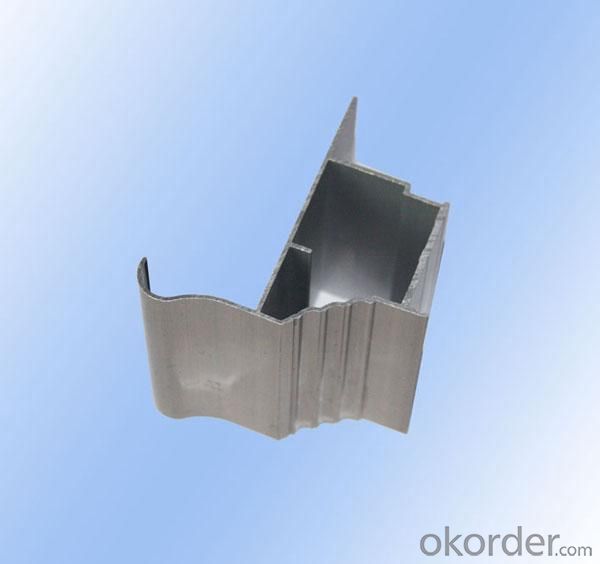
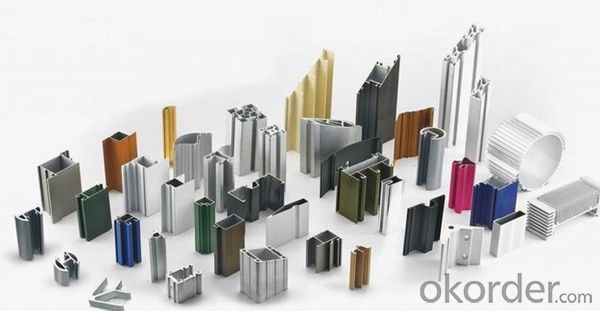
6. Package and shipping of Extruded Aluminum Alloy Profiles Prices Made in China
First, plastic cloth with drying agent inside; Second, Pearl Wool; Third, wooden cases with dry agent, fumigation wooden pallets, aluminum surface could cover blue PVC film
7. FAQ
Question 1: What is your MOQ?
We accept one ton per type for an order. But the detail we could negotiate.
Question 2: What is your normal terms of payment?
We always trade with you by T/T. But we also accept the L/C as you require.
Question 3: How many kinds of the surface treatment we can choose?
You could choose different color of powder coated. Anodized of black. matte silver, nature, champagne, bronze color. Mill finished. Wooden finished and printed.etc.
Question 4: Can you supply OEM services?
We offer OEM services for 17 years.
Question 5: How many days for opening the mould?
Normally about 10 days.According to the difficulty of your drawing.
Question 6: Can i choose the package what i want?
Yes, of course. We offer various kinds of package.e.g.PE foam. Shrink film. Wrapping paper.
But we would give you professional suggestion of package.
- Q: What is the cost of aluminum profiles?
- Several factors can impact the cost of aluminum profiles, including the type of profile, required length and thickness, and prevailing market conditions. Typically, aluminum profiles are priced per linear foot or meter. Moreover, the price might be affected by the quality of the aluminum utilized and any necessary additional finishes or treatments. To obtain precise pricing details, it is recommended to reach out to local suppliers or manufacturers, as pricing can vary across regions.
- Q: Can aluminum profiles be an alternative to steel or other materials?
- Yes, aluminum profiles can be a viable alternative to steel or other materials in many applications. Aluminum profiles offer several advantages over steel, such as being lightweight, corrosion-resistant, and highly durable. One of the key benefits of aluminum profiles is their low weight. Aluminum is approximately one-third the weight of steel, making it an ideal choice when weight reduction is a priority. This lightweight nature makes aluminum profiles easier to handle, transport, and install, reducing overall costs and labor requirements. Additionally, aluminum profiles possess excellent corrosion resistance properties, especially when compared to steel. Aluminum naturally forms a protective oxide layer when exposed to air, which prevents further oxidation and corrosion. This makes aluminum profiles suitable for applications in industries such as construction, automotive, aerospace, and marine, where exposure to moisture, saltwater, or harsh weather conditions is common. Another advantage of aluminum profiles is their high strength-to-weight ratio. Aluminum alloys can be engineered to provide exceptional strength while still being lightweight. This makes them an excellent choice for structural applications where both strength and weight reduction are crucial. Furthermore, aluminum profiles are highly durable and can withstand extreme temperatures. Aluminum has a melting point of 660 degrees Celsius, significantly higher than most other non-ferrous metals. This makes it suitable for applications where exposure to high temperatures or thermal stress is expected. Aluminum profiles can also be easily fabricated, allowing for complex shapes and designs. They can be extruded, machined, welded, or formed into various configurations to meet specific requirements. This flexibility in manufacturing processes makes aluminum profiles a versatile material choice. However, it is important to note that aluminum profiles may not be suitable for all applications. Steel still offers superior strength and rigidity, making it more appropriate for heavy-duty applications or areas where high impact resistance is required. Additionally, aluminum profiles can be more expensive compared to steel, depending on the specific alloy and manufacturing processes involved. In conclusion, aluminum profiles can serve as a viable alternative to steel or other materials in many applications. Their lightweight nature, corrosion resistance, high strength-to-weight ratio, durability, and ease of fabrication make them an attractive choice for various industries. However, the specific requirements of each application should be carefully considered before deciding on the most suitable material.
- Q: This question asks about the effects of utilizing aluminum profiles in the construction industry on the environment.
- <p>The environmental impacts of using aluminum profiles in construction are multifaceted. On the positive side, aluminum is lightweight and strong, reducing the amount of material needed and potentially decreasing energy consumption in transportation. It is also recyclable, which can reduce waste and the need for raw material extraction. However, the production of aluminum requires significant energy, often from non-renewable sources, contributing to carbon emissions. Additionally, while recycling reduces environmental impact, it still consumes energy and can generate waste. The longevity and durability of aluminum can lead to less frequent replacement, reducing construction waste, but improper disposal can lead to pollution. Overall, the environmental impact depends on the balance between these factors and the specific practices of aluminum production and use in construction.</p>
- Q: Can aluminum profiles be used for DIY projects or home improvement?
- Aluminum profiles have multiple applications in DIY projects and home improvement. Their versatility allows for easy cutting, shaping, and joining, enabling the creation of diverse structures and components. Despite being lightweight, they possess strength and durability, making them suitable for various projects. Whether you desire a personalized shelving unit, a garden fence, a solar panel frame, or even a one-of-a-kind furniture piece, aluminum profiles prove to be an excellent choice. Moreover, they possess corrosion resistance and require minimal upkeep, making them perfect for outdoor undertakings as well. With the appropriate tools and a touch of creativity, aluminum profiles can be transformed into functional and visually appealing additions to your home.
- Q: How can I distinguish aluminum from aluminium oxide or electrophoresis aluminum or spray aluminium material?
- The electrophoretic material looks very textured, very uniform, and full range. Spray paint will not spray in some places, and the color is not as good as electrophoresis.
- Q: Is it possible to recycle aluminum profiles and repurpose them for construction purposes?
- <p>Yes, aluminum profiles can be recycled and reused as building materials. Aluminum is highly recyclable, and the recycling process requires significantly less energy compared to producing new aluminum from raw materials. Recycled aluminum maintains its strength and properties, making it suitable for various construction applications. This practice not only conserves natural resources but also reduces waste and environmental impact.</p>
- Q: What is aluminum profile?
- Aluminum is the aluminum bar through hot melt, extrusion, so as to obtain different cross-section of aluminum. The production process of aluminum profile mainly includes three processes: casting, extrusion and coloring. Among them, the color mainly includes: oxidation, electrophoresis coating, fluorine carbon spraying, powder spraying, grain transfer and other processes.
- Q: How is the tonnage of aluminum profile extrusion machine calculated? Do you have any formulas? For example, 30*60 industrial profiles, the need for a large tonnage of extrusion machine can be done?
- Casting rod diameter is calculated according to the tube extrusion, general 1000T compressor between 120-134 aluminum rod, 1500 compressor between 152-178 aluminum rod, 2000T compressor use about 203 aluminum bars, 3600 general use of 310 aluminum rod,
- Q: Can aluminum profiles be used for conveyor belts?
- Yes, aluminum profiles can be used for conveyor belts. Aluminum is a versatile and lightweight material that is commonly used in various industrial applications, including conveyor systems. Aluminum profiles offer several advantages for conveyor belts, such as high strength-to-weight ratio, corrosion resistance, and easy customization. These profiles can be easily fabricated into different shapes and sizes to match the specific requirements of the conveyor system. Additionally, aluminum profiles can be an economical choice as they require less maintenance and have a longer lifespan compared to other materials. Overall, aluminum profiles are a suitable option for conveyor belts due to their durability, versatility, and cost-effectiveness.
- Q: What are the electrical insulation properties of aluminum profiles?
- Aluminum profiles have relatively low electrical insulation properties compared to other materials commonly used in electrical applications, such as plastics or ceramics. This is because aluminum is a highly conductive material, meaning it readily allows the flow of electrical current. However, aluminum profiles can still be used effectively in electrical applications if proper precautions are taken to ensure insulation. For example, aluminum profiles can be anodized or coated with insulating materials such as epoxy or polyurethane to improve their insulation properties. These coatings create a barrier between the aluminum and the electrical current, reducing the risk of electrical conductivity. Additionally, aluminum profiles can be used in conjunction with other insulating materials to provide the desired level of electrical insulation. For example, when used in electrical wiring systems, aluminum conductors are often combined with insulating materials such as PVC or cross-linked polyethylene to provide reliable insulation. It is important to note that while aluminum profiles may have lower electrical insulation properties compared to other materials, they do offer other desirable characteristics such as high strength, lightweight, and corrosion resistance. Therefore, careful consideration should be given to the specific application and electrical requirements before selecting aluminum profiles as an electrical insulation material.
Send your message to us
Aluminum Siding Profiles - Extruded Aluminum Alloy Profiles Prices Made in China
- Loading Port:
- Shanghai
- Payment Terms:
- TT OR LC
- Min Order Qty:
- 5 m.t.
- Supply Capability:
- 10000 m.t./month
OKorder Service Pledge
OKorder Financial Service
Similar products
Hot products
Hot Searches
Related keywords
